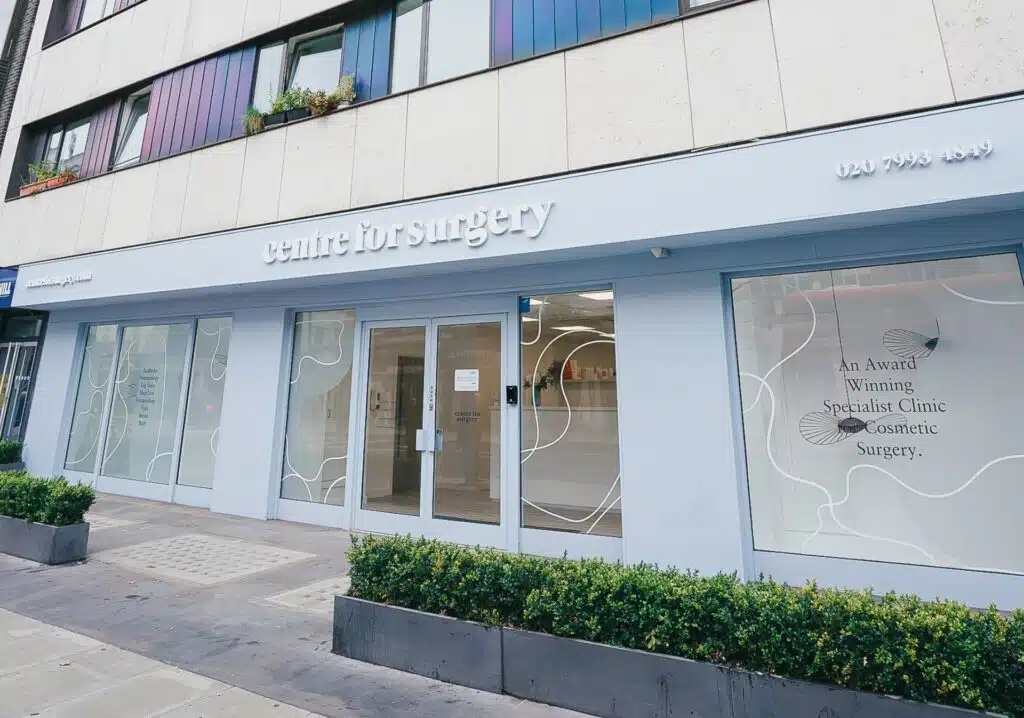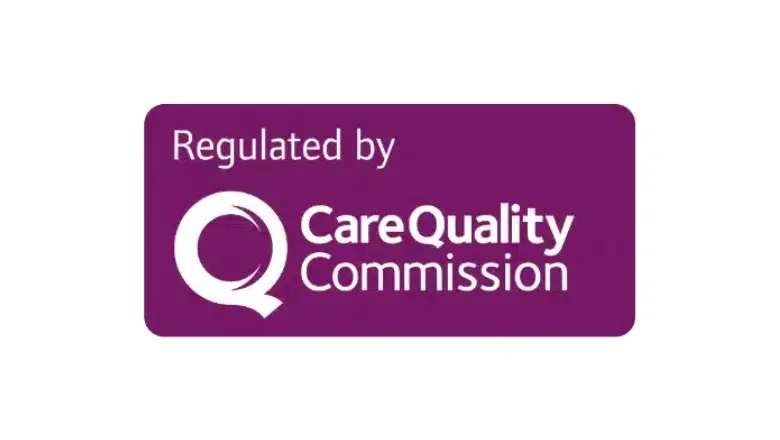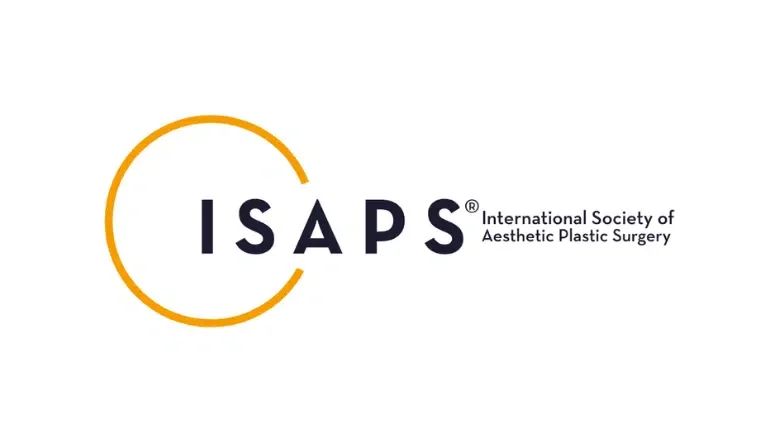Gynecomastia, often less talked about, is actually a frequently encountered condition characterised by the enlargement of breast tissue in males. It’s a condition that transcends age, potentially impacting both men and boys at various life stages. Crucially, gynecomastia isn’t merely a matter for cosmetic consideration; it bears significant medical implications as well. At Centre for Surgery, our team of expert plastic surgeons delves into the root causes of this condition and the range of effective treatments available to those affected.
RELATED: How Common Is Gynecomastia?
The enlargement of male breast tissue, medically termed gynecomastia, is a condition that’s more prevalent than commonly perceived. It presents as an increase in the size of breast tissue in males, a condition that isn’t restricted to any specific age group; it can affect both boys and men at different points in their lives. Understanding gynaecomastia is essential, as it extends beyond a cosmetic issue and enters the realm of medical concern. In this detailed exploration, our plastic surgeons at Centre for Surgery will shed light on what leads to the development of gynecomastia. Furthermore, we’ll comprehensively examine the array of solutions available, offering hope and guidance to those grappling with this condition.
RELATED: Gynecomastia Surgery FAQs – Q&A about Male Breast Reduction
Causes of Gynecomastia
Gynecomastia, a condition characterised by the development of excess glandular tissue in the male breast, stands apart from pseudo-gynecomastia, which is associated with fat accumulation in overweight individuals. This enlargement in true gynecomastia primarily stems from an imbalance between oestrogen and male hormones, hormones present in both men and women. Oestrogen promotes the growth of breast tissue, while male androgens serve to inhibit this growth. When oestrogen levels predominate, it can result in the growth of breast tissue. Intriguingly, gynecomastia can emerge at any life stage: in newborns due to maternal oestrogen, during puberty as a result of hormonal shifts leading to temporary imbalances, and in older men where a decline in androgen levels combined with increased body fat can boost oestrogen levels. Moreover, certain medications, illegal substances, and a variety of health conditions can also precipitate the development of gynecomastia.
Hormonal Imbalances and Their Impacts
The primary catalyst for gynecomastia is a disruption in the balance between oestrogen and androgens. Though these hormones are found in both genders, they exist in varying proportions. Oestrogen is responsible for breast tissue growth, whereas androgens counteract this effect. A shift in favour of oestrogen can lead to breast tissue growth. This imbalance can arise naturally during different life phases, including infancy, puberty, and later in life. Nonetheless, certain medical conditions and lifestyle choices can also disrupt this hormonal equilibrium.
Medications and Substance Use
Potential Triggers A range of medications and substances are known to contribute to developing gynecomastia. These include:
- Anabolic Steroids: Commonly used in bodybuilding, these can lead to hormonal imbalances.
- Alcohol: Excessive consumption can impair liver function, influencing hormone levels.
- Heart Condition Medications: Drugs like calcium channel blockers, used for heart conditions, can induce gynecomastia.
- Anti-Ulcer Drugs: Medications for stomach ulcers and acid reflux have been linked to this condition.
- Anti-Androgens: Prescribed for prostate enlargement and cancer, these can cause gynecomastia.
- HIV Medications: Certain treatments for HIV/AIDS can affect hormone levels.
Health Conditions as Contributing Factors
Several health issues can lead to the onset of gynecomastia, including:
- Liver Diseases: Conditions like cirrhosis can disrupt the processing of hormones.
- Kidney Failure: Impaired kidney function can lead to hormonal changes.
- Thyroid Disorders: Thyroid hormones are integral in regulating the overall hormonal balance.
- Obesity: Increased body fat can elevate oestrogen production.
- Tumours: Certain tumours, particularly those affecting the testes, adrenal glands, or pituitary gland, can produce hormones leading to gynecomastia.
Age-Related Hormonal Changes
Gynecomastia can also be a natural part of the ageing process. As men age, androgen levels naturally decline, while body fat, capable of producing oestrogen, tends to increase. These shifts can disrupt the hormonal balance, potentially leading to the development of breast tissue. This aspect underscores the multifaceted nature of gynecomastia, highlighting the complexity of its causes and the importance of a thorough medical evaluation for those experiencing this condition.
Gynaecomastia vs Chest Fat and Other Similar Conditions”
Recognising the unique characteristics of gynaecomastia is crucial, especially in differentiating it from other conditions that lead to male breast enlargement. A common point of confusion lies with pseudo-gynecomastia, which results from an excess of fat rather than an increase in glandular breast tissue. Contrary to gynecomastia, pseudo-gynecomastia is often linked with obesity and lacks the hormonal influences that are characteristic of true gynecomastia.
RELATED: Gynecomastia vs Chest Fat – How to Tell the Difference
Additionally, it’s important to be aware of the possibility of breast cancer in males, a condition that is relatively rare but can sometimes be mistaken for gynecomastia. Male breast cancer typically manifests as a firm, unilateral lump within the breast tissue, which contrasts with the more evenly distributed enlargement typical of gynecomastia.
Understanding whether one is dealing with gynecomastia or a different condition is critical in determining the appropriate treatment strategy. For example, while weight reduction can lead to a decrease in breast size in cases of pseudo-gynecomastia, this approach will not yield the same results for gynecomastia. Similarly, while the majority of gynaecomastia cases are benign, the early identification and treatment of breast cancer is vital for favourable health outcomes. This distinction underscores the necessity of a thorough medical evaluation for accurate diagnosis and treatment planning, especially in situations where the underlying cause of breast enlargement is uncertain.
Optimal Preparation and Procedure for Male Breast Reduction Surgery
Male breast reduction surgery, commonly known as gynecomastia surgery, is a specialised medical intervention designed to decrease breast size in men, thereby enhancing the chest’s contours and achieving a more masculine appearance. Typically, this surgery involves the meticulous removal of excess fatty tissue, glandular tissue, and in some cases, skin.
The preparation phase for male breast surgery is crucial and involves several key steps to ensure both the safety and efficacy of the procedure. The journey begins with a comprehensive medical evaluation to determine your suitability for surgery. This evaluation often includes various laboratory tests that provide a detailed insight into your overall health status.
Another critical aspect of preparation involves tailoring your medication regimen. Based on the guidance of your surgeon at Centre for Surgery, you might need to adjust the dosages or temporarily halt the use of certain medications. This step is fundamental in reducing potential risks both during and after the surgery.
Lifestyle modifications also play a pivotal role in preparing for surgery. Ceasing smoking is strongly advised, as smoking can significantly hinder the healing process and elevate the likelihood of postoperative complications. Similarly, minimising alcohol intake is crucial, as alcohol can negatively impact your body’s response to anaesthesia and impede recovery.
Arranging for postoperative support is an essential aspect of your preparation. It involves planning for someone trustworthy to transport you home following the surgery and assist you during the initial recovery phase. During this time, you may experience limited mobility and may not be able to engage in your usual daily activities.
Male Breast Reduction Surgery: Techniques and Process for Enhanced Aesthetics
The surgical process for male breast reduction, tailored to address gynecomastia, involves a range of techniques selected based on the individual’s specific requirements and physical structure. The primary methods include liposuction, excision, or a combination of both, each targeting different types of tissue.
Liposuction plays a pivotal role in this surgery, especially when removing excess fatty tissue. This technique involves the insertion of a cannula—a slender tube—through small incisions made in the target area. The cannula then suctions out the fatty tissue. This approach is typically less invasive and is ideally suited for cases where there is a considerable amount of fatty tissue but minimal glandular tissue.
In contrast, excision techniques are employed when the surgical goal is to remove glandular breast tissue or excess skin. This approach is often necessary in cases where there is sagging or stretching of the areola, a common occurrence in gynecomastia. The decision between liposuction and excision is made based on the specific composition of the breast tissue and the desired outcome.
The procedure is usually performed under general anaesthesia, ensuring that you are comfortably asleep and pain-free throughout. Surgical precision is key; hence, incisions are strategically made around the areola or along the natural creases of the chest. This careful placement is crucial for minimising visible scarring. The extent and location of these incisions are determined by the volume and distribution of the excess tissue and the unique contours of your chest.
A fundamental goal of the surgeon during this procedure is not only to achieve a more defined, masculine chest contour but also to ensure symmetry, a natural appearance, and minimal scarring. After the surgery, you will receive comprehensive post-operative care instructions. Adhering closely to these guidelines is essential for promoting optimal healing and obtaining the best possible results. These instructions typically cover aspects such as activity restrictions, wound care, and follow-up appointments. By following these carefully crafted guidelines, you play an active role in your recovery and the achievement of your aesthetic goals.
Additional Treatment Strategies for Managing Gynaecomastia
Dealing with gynaecomastia can be challenging, but there are a variety of treatment options available that can help manage or potentially alleviate the condition. These approaches range from lifestyle adjustments to specific medical interventions, each offering a different pathway towards improving the condition.
Dietary Adjustments for Health and Balance
A well-balanced diet plays a crucial role in managing gynecomastia, especially if the condition is linked to excess body weight. Focusing on a diet rich in fruits, vegetables, lean proteins, and whole grains can promote overall health and aid in weight management. It’s advisable to limit foods high in sugar and fat, as these can contribute to weight gain and potentially exacerbate the appearance of gynecomastia. However, it’s important to remember that a healthy diet should focus on balance and moderation rather than extreme restriction.
Exercise: A Dual-Pronged Approach
Regular physical activity is beneficial in two significant ways. Firstly, it can help with weight loss, potentially reducing the appearance of gynecomastia, particularly if it’s related to excess fat. Secondly, specific exercises, particularly those that strengthen and tone the chest muscles, can make the condition less noticeable. It’s important to note, however, that exercise alone may not fully resolve gynecomastia if it’s primarily caused by glandular tissue growth.
Alcohol, Drugs, and Their Impact
Reducing alcohol intake and avoiding drugs that contribute to gynecomastia, such as anabolic steroids and certain prescription medications, is another vital step. If you suspect that your prescription medication might be exacerbating your condition, it’s essential to consult with your doctor to discuss possible alternatives or adjustments to your medication regimen.
Medication as a Treatment Option
In some cases, specific medications can effectively treat gynecomastia, particularly when the condition is identified early. These medications might work by adjusting hormone levels in the body or by blocking the effects of oestrogen. It’s important to consult with a healthcare professional to determine if this approach is suitable for your specific case and to understand the potential benefits and side effects of these medications.
Essential FAQs About Gynaecomastia: Causes, Identification, and Treatment Options
How can I tell if I have gynaecomastia or just extra fat?
Gynaecomastia is distinguished by the development of firm, glandular tissue in the breast area, which feels different from the softer, more pliable consistency of fat. This glandular tissue usually forms a discernible, rubbery mass extending concentrically from the nipples. In contrast, extra fat in the chest is typically a part of overall body fat and lacks this concentrated, firm texture. To accurately determine if you have gynecomastia, a plastic surgeon can perform a detailed physical examination, possibly including palpation of the breast tissue. In some cases, further diagnostic imaging, such as ultrasound or mammography, might be utilised to confirm the diagnosis.
Is gynecomastia a common occurrence in teenage boys?
Yes, gynecomastia is quite prevalent among teenage boys. This is largely due to the hormonal fluctuations experienced during puberty. As boys go through this developmental stage, their bodies produce more oestrogen, which can sometimes result in the development of breast tissue. Typically, gynecomastia in this age group is a temporary condition and tends to resolve on its own as hormone levels stabilise. This natural resolution generally occurs within six months to two years.
Can gynecomastia go away on its own?
Gynecomastia, particularly in teenage boys, often resolves spontaneously as hormone levels even out after puberty. However, in adult men, the condition is less likely to go away on its own, especially if it has been present for a considerable duration. Adults with persistent gynecomastia may require medical intervention, such as medication or surgery, or lifestyle changes, like dietary adjustments and increased physical activity, for the condition to improve or resolve completely.
RELATED: Does Gynecomastia Go Away?
Are there any specific lifestyle changes I can adopt to reduce the effects of gynecomastia?
Yes, certain lifestyle modifications can help manage gynecomastia. Firstly, a balanced diet rich in nutrients, with a focus on fruits, vegetables, lean proteins, and whole grains, can be beneficial. Such a diet helps in maintaining a healthy body weight, which can reduce the appearance of gynecomastia, especially if it is related to excess fat. Regular physical activity, particularly exercises that target and tone the upper body, can also make gynecomastia less noticeable. Reducing alcohol intake is advisable, as alcohol can disrupt hormone balance. Additionally, avoiding drugs and medications known to cause gynecomastia, like anabolic steroids and certain hormone-related medications, can prevent the condition from exacerbating.
Is surgery for gynaecomastia safe?
Surgery for gynecomastia, like any surgical procedure, carries certain inherent risks. The most common surgical techniques for addressing gynecomastia are liposuction, which targets excess fatty tissue, and mastectomy, which involves the removal of glandular tissue. Potential risks of these surgical procedures include infection, scarring, and changes in sensation in the breast or nipple area. It’s essential for individuals considering surgery to have an in-depth discussion with their specialist plastic surgeon about these risks, the potential benefits, and their expectations from the surgery. This conversation helps in making an informed decision and understanding the post-operative care required for a successful recovery.
Gynecomastia Surgery in London: Discover Excellence at Centre for Surgery
Why Choose Centre for Surgery for Your Gynecomastia Treatment?
Centre for Surgery, located in the heart of London, stands as a beacon of excellence and innovation in the field of cosmetic surgery. Specialising in gynecomastia surgery, our clinic is renowned for its state-of-the-art facilities, highly skilled surgeons, and a patient-centred approach that prioritises your comfort and results.
Here are a few reasons why Centre for Surgery is your ideal choice:
- Expert Medical Team: Our team of specialist plastic surgeons is extensively trained and experienced in the latest gynecomastia treatment techniques. They are dedicated to providing personalised care tailored to meet your unique needs and aesthetic goals.
- Advanced Techniques: We utilise cutting-edge surgical techniques to ensure minimal discomfort, reduced scarring, and optimal results. Our approach is always geared towards achieving a natural, masculine chest contour with the highest safety standards.
- Comprehensive Care: From your initial consultation through to your recovery, our team offers comprehensive support and guidance. We believe in building a trusting relationship with each patient to ensure a comfortable and successful treatment journey.
Patient Testimonials: Real Stories, Real Results
- John’s Experience: “After struggling with gynecomastia for years, I finally decided to have surgery at Centre for Surgery. The results have been life-changing. The staff were incredibly supportive, and the care I received was exceptional. I wish I had done this sooner.”
- Michael’s Journey: “The team at Centre for Surgery was fantastic. From the first consultation, I felt informed and reassured. The surgery went smoothly, and I am thrilled with the results. It’s given me a new lease on life.”
- David’s Transformation: “Choosing Centre for Surgery for my gynecomastia treatment was the best decision I ever made. The results have exceeded my expectations, and the confidence boost is immeasurable. The entire process was professional and caring.”
Book Your Consultation Today
To start your journey towards a more confident you, book a consultation with our expert team. Call us at 0207 993 4849 or email contact@centreforsurgery.com. For more information about our services and what makes us stand out, visit our About Us page.
Explore More at Centre for Surgery
- Finance Options: We offer flexible finance options, including 0% APR with Chrysalis Finance, making your treatment more accessible. Learn more about our finance options.
- Informative Plastic Surgery Blog: Stay informed and up-to-date with the latest trends and information in plastic surgery by visiting our blog.
- Clinic FAQs: Have questions? Our comprehensive FAQs provide valuable insights into our procedures and what to expect.
- Visit Our Baker Street Clinic: Experience our world-class services in person at our Baker Street clinic in London. Find more details here.
At Centre for Surgery, we are committed to providing exceptional care and achieving the best possible outcomes for our patients. Contact us today to take the first step towards a new, confident you.











